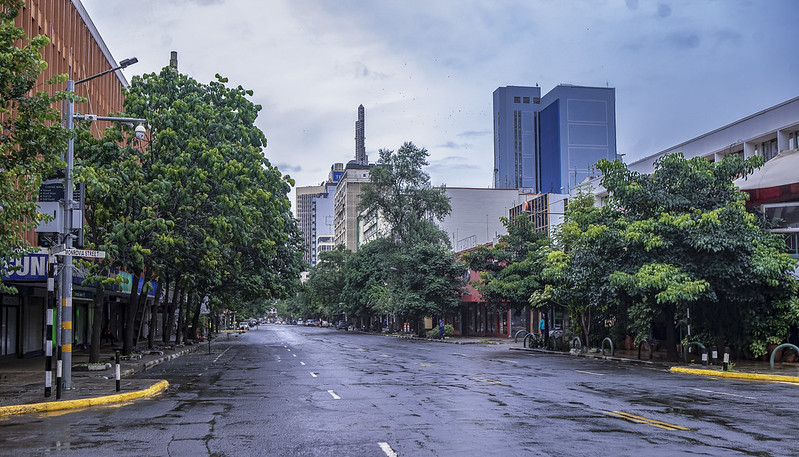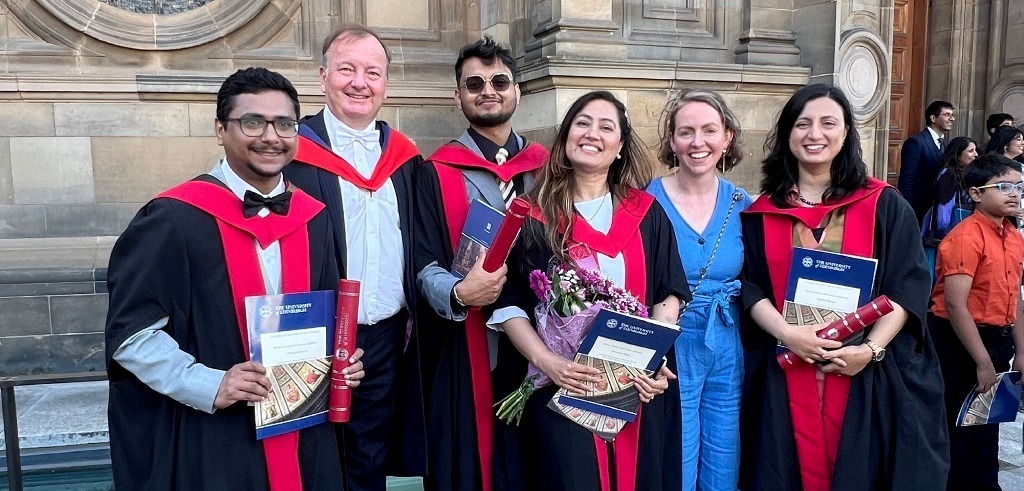
- Close
13/04/2021 | Nairobi
How can African Cities be at the forefront of building back better after COVID-19?

When the pandemic hit the continent and African governments introduced measures to curb the spread of the virus, most of these measures, especially the lockdowns and the curfews, led to adverse socioeconomic impacts. Most countries are experiencing negative economic growth within the pandemic period. When it comes to urban areas, there is huge dependence on the informal economy, especially the population in the slums. In Nairobi, within the first month of lockdown, 81% of the population lost their means of livelihood and families were unable to sustain themselves.
In Africa, cities generate about 50% of the regions’ GDP, and this is higher in some countries such as Botswana. Therefore, what happens in the cities has a major impact on the overall region and can enhance or threaten sustainable development. Cities continue to be the epicenters of this pandemic with over 95% of the reported cases (Ngomsi, et al., 2020). This is happening because cities are the gateways from the other continents and population congestion is contributing to the spread and faster transmission. The cities’ infrastructure also continues to play part in the transmission of the virus with the health and physical planning not providing an enabling environment to support the fight against the pandemic.
The Nairobi Risk Hub co- convened a webinar with the Africa Research and Impact Network (ARIN) on 3rd September 2020. The webinar, titled “Cities and Resilience – Post COVID-19 African Cities”, aimed at facilitating researchers to deliberate on research-centered responses that can be produced that will define post-COVID-19 African cities. For us to have a bigger picture of the impact of COVID-19 on African cities, we need to appreciate roles of African cities and why they need to be resilient.
The future of African cities.
The future is going to be urban with projections indicating that by 2035, the majority of the African population is going to be living in cities. Therefore, as we think about rebuilding our countries post COVID-19, cities have to be at the forefront as we think about how cities can be able to sustain growing populations and rapid urbanization.
One school of thought on urban transformation is focused on smart high-tech cities. The high-tech city envisions the need to be healthy, happy and have efficient systems that are sustainable with innovative solutions (Bello-Schünemann, et al., 2018). Another vision of urban transformation for the future is green cities that are more sustainable – often this kind of thinking is related to a “let’s build this kind of city from the ground up” mindset.
Covid-19 Policy dilemma
Going by what was mostly supplied (personal protective equipment, masks, sanitizers et cetera) by the government, development partners, private sector and the civil society in the first few months of the pandemic, the government policies were fashioned to combat the pandemic as a health issue. A survey recently carried out in informal settlements in Nairobi revealed that what most of the people from the informal settlements actually needed were; an improvement of the economic environment, restoration of income, businesses and their sources of livelihood (Muungano Wa Wanavijiji., 2021). These were linked with food. Other social issues strongly emerging are; mental health, violence in the family and teenage pregnancies. It is evident that whatever is being supplied (health and food) already mismatches demands, which are economic and livelihood issues and a wide array of social issues.
Post covid-19 African cities
As we design post COVID-19 African cities, it is very important to develop updated policy frameworks supporting the building of future African resilient cities. Africa should leverage on the global, regional and national policy framework. There is need to encompass and incorporate the different sectors and different policies to understand the points of convergence and divergence so that the contestation and potential conflicts that would emerge in terms of developing the policy is mitigated. The role of evidence cannot be ignored (Onyango, et al., 2020). It is important to generate evidence to inform planning and also catalyze lessons learnt in African contexts to prepare each resilient city.
We need to revisit the current perspective of cities and be able to highlight some of the potential factors that we need to focus on and follow through as we start to rebuild our cities to ensure that they able to withstand the impacts of future pandemics.
Sustainable Urban Transport
As we move forward, we need to think how people move at the minimum environmental, economic and even social cost. We can do this by starting to prioritize public transport and Non-Motorized Transport (NMT). In terms of public transport, there are matatus, but they are still not prioritized. Around 2018, when the governor of Nairobi decided to block the matatus from entering the Central Business District (CBD), the biggest traffic jam ever was witnessed (Institute for Transportation and Development Policy, 2020), meaning the public modes of transport are not the cause of traffic jams in Nairobi. We need to ensure that a lot of people are able to move fast. That’s why there has been work to design the Bus Rapid Transit (BRT) for Nairobi and it is hoped that its implementation is going to assist in ensuring there is smooth movement within the Nairobi Metropolitan region. This will significantly reduce the traffic emissions coming from the vehicles. We need to invest in NMT (walking and cycling). The Nairobi Metropolitan Services’ (NMS) interventions in the recent past within the CBD are commendable. NMS is reclaiming a lot of parking spaces and this is going to encourage more people to walk. We however need to do more. I do not cycle because the cycling tracks are not continuous, and one could easily lose their life along the road. We need to ensure that there is a continuous cycle-track from the neighborhoods to the workplace.
Covid-19 as an opportunity
The pandemic has presented a number of challenges but also opportunities that we can take to build better, more resilient and sustainable cities going forward. On housing, we need to design homes that are able to facilitate home based care and isolation, as seen in the recent past when health facilities were closed down and patients were taken care of under home based care.
Furthermore, how do we design our homes to facilitate or to accommodate working remotely? How do we leverage IT and emerging technologies to be able to create jobs especially for the youth?
Work Cited
Bello-Schünemann, J. et al., 2018. African Futures 2035: Key Trends. Journal of Futures Studies,, 23(1).
Institute for Transportation and Development Policy, 2020. Better than a ban: Prioritising efficient public transport in the Nairobi CBD. Better than a ban: Prioritising efficient public transport in the Nairobi CBD, 20 November.
Muungano Wa Wanavijiji. , 2021. Muungano’s coronavirus response. [Online]
Available at: https://www.muungano.net/muunganos-covid-19-response
[Accessed 26 March 2021].
Ngomsi, C. et al., 2020. COVID-19 IN AFRICAN CITIES: Impacts, Responses and Policies, Nairobi: UN-HABITAT, UNCDF, UCLG-A.
Onyango, J., Atela, J. & Ndege, N., 2020. Lessons for Africa’s research in the face of COVID-19, Nairobi: The Africa Research and Impact Network.


